We find out how a cocktail of chemicals in Black Fly saliva could offer a cure for River Blindness, discover that Jackdaws know when they're being watched, and that Chimps exchange meat for sex! Plus, Sarah Castor-Perry explores this week in science history...
In this episode
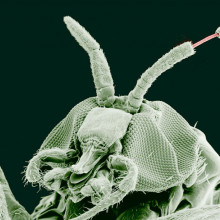
Chemical Cocktail in Fly Saliva
A cocktail of chemicals found in the saliva of black fly could help us to develop better drugs, and maybe even a vaccine, against river blindness.River blindness, or Onchocerciasis as it's also known, affects 17 million people worldwide, and is the world's third leading infectious cause of blindness. It's caused by a nematode parasite called Onchocerca volvulus, which is transmitted in the bite of the Black Fly.
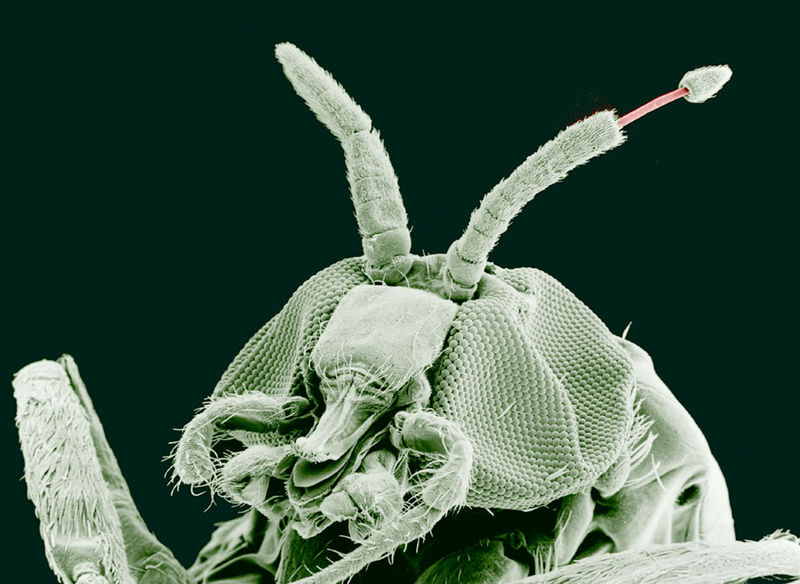 Writing in the Journal of Proteome Research, José Ribeiro from the Laboratory of Malaria and Vector Research at the US National Institute of Health and colleagues, looked at the cocktail of proteins in Black Fly saliva. The saliva of biting insects is well adapted to the job and contains anticlotting, antiplatelet, vasodilatory, antiinflammatory, and immunomodulatory components. These help to stop the host's immune system reacting while the fly gets it's feed.
Writing in the Journal of Proteome Research, José Ribeiro from the Laboratory of Malaria and Vector Research at the US National Institute of Health and colleagues, looked at the cocktail of proteins in Black Fly saliva. The saliva of biting insects is well adapted to the job and contains anticlotting, antiplatelet, vasodilatory, antiinflammatory, and immunomodulatory components. These help to stop the host's immune system reacting while the fly gets it's feed.
The team sequenced the genes found in Black Fly salivary glands, to find out what proteins were expressed in saliva, and then worked out which of these were excreted, rather than just used for housekeeping inside the gland.They found that there is some overlap with the proteins found in other blood-feeding insects, as you would expect, as well as a large amount of unique genes. This in itself gives us an insight into how blood-feeding evolved and diversified, allowing the insect to adapt to pressure from the host's immune system.
Several new protein families were discovered, many of which have pharmacologic potential to be developed into new medicines.But importantly, the more we know about the chemical conditions under which the nematode parasite is transmitted, the more targets we have to develop treatments that could block the transmission of parasites, or stop them from taking hold inside the body. Not only could this work help to develop a vaccine against river blindness, but it gives us some tantalising hints as to new ways to tackle other diseases that are transmitted in the same way - including malaria.
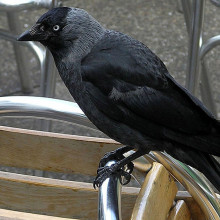
02:56 - Jackdaws know when they are being watched
Jackdaws know when they are being watched
Do you behave differently when you're being watched?
It now seems that Jackdaws, birds related to crows and ravens, do the same. At the least, they recognise the importance of the human eye with regards vision and attention, and seem to be more aware of being watched by a stranger.
Writing in Current Biology, Auguste van Bayern from Oxford University reports that hand-raised Jackdaws take much longer to retrieve a food reward when a person was directing their gaze at the food, compared to when the person was looking away. This hesitation was only seen when the person doing the watching was a stranger, and so potentially a threat.
Even more interesting than this, the birds could interpret human communicative gestures, such as changing gaze and pointing, to help find hidden food. Unchanging eye gaze alone did not help to direct them to the food.
This is the first animal we have known to be particularly sensitive to the eyes. Chimpanzees and dogs rely on head or body orientation as an indication of attention, but only Jackdaws seem to acknowledge the role of the eyes in visual perception.
We're not certain exactly why just yet, but it certainly indicates that we have underestimated the intelligence and psychology of these birds. Jackdaws have eyes that are very similar to ours, and von Bayern puts forward one hypothesis, saying that:
"Jackdaws ... form pair bonds for life and need to closely coordinate and collaborate with their partner, which requires an efficient way of communicating and sensitivity to their partner's perspective."
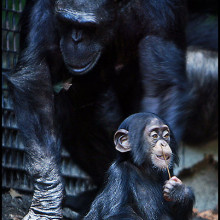
Exchanging food for sex
Wild female chimpanzees will copulate more often with males who regularly bring them meat, according to a study published in the open access journal PLoS One this week.Mate selection by females is a puzzle in chimpanzees as well as in humans, but there is some indication that more successful hunters tend to have more partners and a larger number of offspring. Male chimpanzees are known to share meat with females, who do not hunt, and so researchers hypothesised that females exchange meat for mating access.
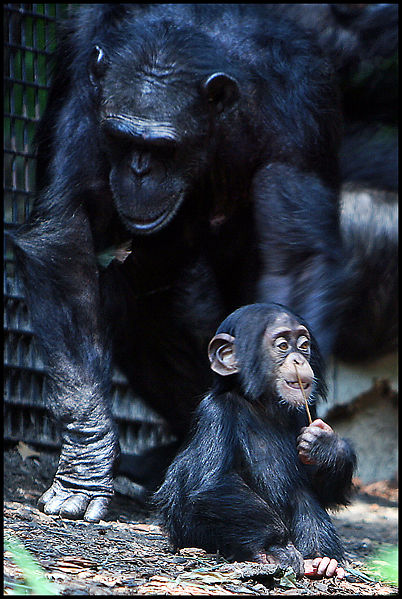 Observing wild chimps in the Taï National Park, on the Ivory Coast, Cristina Gomes and Christophe Boesch recorded meat-sharing and copulation activities over a period of 22 months, and analysed the data to see if their hypothesis held true. They found that males were more likely to share meat with females during oestrus, when they are at their most fertile and display sexual swellings, but even once these were discounted from the data, the pattern was still present. Even once they controlled for the effect of male social rank and female gregariousness, females copulated more often with males that share their meat.
Observing wild chimps in the Taï National Park, on the Ivory Coast, Cristina Gomes and Christophe Boesch recorded meat-sharing and copulation activities over a period of 22 months, and analysed the data to see if their hypothesis held true. They found that males were more likely to share meat with females during oestrus, when they are at their most fertile and display sexual swellings, but even once these were discounted from the data, the pattern was still present. Even once they controlled for the effect of male social rank and female gregariousness, females copulated more often with males that share their meat.
The obvious advantage for the females is that they increase their calorific intake without the dangers and energetic costs of hunting. The males can double their mating success by being generous with the spoils of a hunt.
As their results were collected over 22 months, it also suggests that chimpanzees think of both the past and the future when making decisions about whether or not to share meat, or who to mate with.
Gomes added that "These findings are bound to have an impact on our current knowledge about relationships between men and women; and similar studies will determine if the direct nutritional benefits that women receive from hunters in human hunter-gatherer societies could also be driving the relationship between reproductive success and good hunting skills,".
It also may shed more light of the evolution of compassion and sharing, as there's a clear evolutionary advantage to not being selfish with your food!
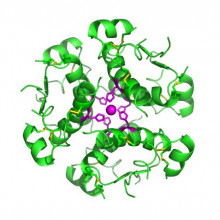
06:54 - This Week in Science History - Available Insulin
This Week in Science History - Available Insulin
Sarah Castor-Perry
This week in science history saw, in 1923, purified extracts of the hormone insulin being made widely available for the treatment of diabetes.
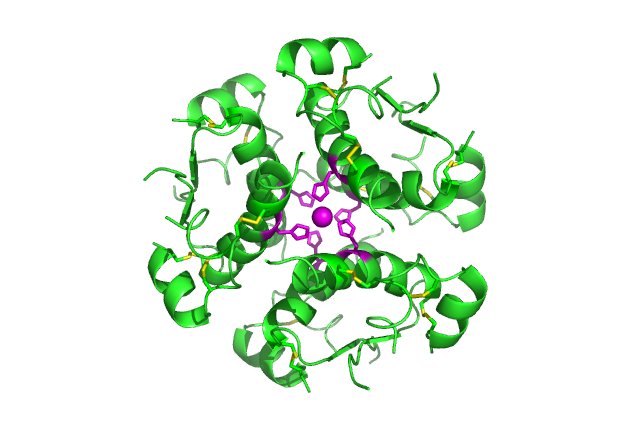 Diabetes is a syndrome that causes high levels of sugar to build up in the blood, either because the body does not produce enough insulin, or it is resistant to its effects. Type 1, where the body does not produce insulin, is often diagnosed in childhood and leaves the sufferer reliant on insulin injections. Type 2, known as insulin resistant diabetes, often occurs later in life and can be controlled by dietary changes and exercise.
Diabetes is a syndrome that causes high levels of sugar to build up in the blood, either because the body does not produce enough insulin, or it is resistant to its effects. Type 1, where the body does not produce insulin, is often diagnosed in childhood and leaves the sufferer reliant on insulin injections. Type 2, known as insulin resistant diabetes, often occurs later in life and can be controlled by dietary changes and exercise.
After a meal, increased levels of sugar in the blood stimulate cells in the Islets of Langerhans in the pancreas to release insulin, which travels in the blood and stimulates tissues in the body, such as the liver and muscles to take up the sugar (glucose) from the blood, and convert it into glycogen to be stored until needed. If the sugar isn't removed from the blood and absorbed by surrounding tissues, it can cause symptoms such as excessive thirst, hunger and urination, as well as fatigue, male impotence, and in serious cases, ketoacidosis (where the body starts to beak down fats and proteins, producing chemicals that make the blood more acidic), reduced cognitive function and coma.
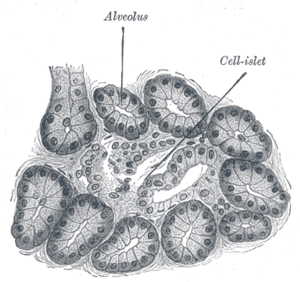 Up until the 20th century, diabetes was pretty much a death sentence, with children and teenagers slipping into hyperglycaemic comas caused by the high levels of sugar in their blood, and never waking up.
Up until the 20th century, diabetes was pretty much a death sentence, with children and teenagers slipping into hyperglycaemic comas caused by the high levels of sugar in their blood, and never waking up.
The first to discover that diabetes was linked to the pancreas was a Polish-German man called Oscar Minkowski in 1889. In experiments where they removed the pancreas of dogs, Minkowski and his colleagues found that there was sugar in the dogs' urine, meaning it hadn't been removed from the blood before passing through the kidneys. In 1901 a man named Eugene Opie showed that it was in fact the Islets of Langerhans within the pancreas that were involved, named after Paul Langerhans, the medical student that first described them. Further experiments during the late 19th century attempted to isolate whatever it was that was produced by the Islets that could regulate levels of sugar in the blood and so treat diabetes.
The major breakthrough came in the early 1920s, when the Canadian Frederick Banting and his colleagues, working in Scotland, found that dogs with their pancreas removed showed diabetes-like symptoms, and that these symptoms were prevented by injecting a purified extract from the pancreas. They called the extract isletin, what we would now call insulin.
 Banting returned to Toronto, Canada, and rather than continuing to use dogs, he began to use foetal calf pancreas for the extracts as the digestive areas of the organs would not have developed and made extracting the isletin easier.
Banting returned to Toronto, Canada, and rather than continuing to use dogs, he began to use foetal calf pancreas for the extracts as the digestive areas of the organs would not have developed and made extracting the isletin easier.
In 1922, the group were able to create an extract of the isletin that was pure enough to inject into patients without having major side effects. They injected an entire ward of comatose children, surrounded by their grieving families, and by the time they reached the end of the ward, the first ones were already awaking from their comas.
By November 1922, the Pharmaceutical company Eli Lilly and Company, who had been working with the group, had made a breakthrough in purifying the extract and they were able to produce large enough quantities that it became available in April the following year.
The two leaders of the Canadian research team working on diabetes that led to the discovery of insulin won the Nobel Prize for Physiology or Medicine in 1923 for their work. Unfortunately, the Romanian scientist Paulescu, who had isolated insulin in 1921, was never credited for his work.
Insulin extracted from animal sources was the only form of insulin available until the developments in genetic engineering in the 1970s and 80s allowed human insulin to be produced by engineering bacteria. 'Recombinant' human insulin is now the main sort used throughout the world, but the breakthrough of the 1920s saved countless lives and made a once certainly fatal disease controllable.









Comments
Add a comment